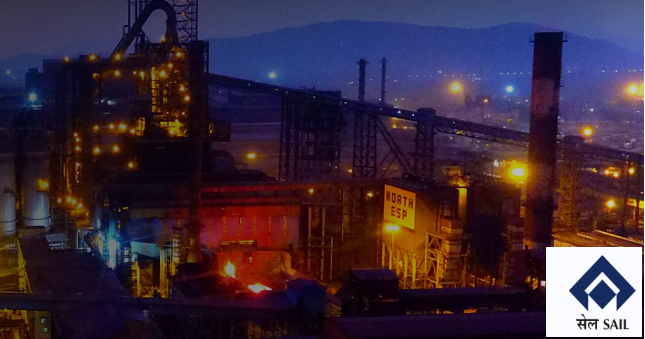
(Photo : www.sail.co.in)
- India is set to announce a definition for green steel, a process that uses renewable energy and reduces carbon emissions.
- Traditional steel production methods generate significant CO2 emissions, but new technologies can reduce these by 25-40%.
- The transition to green steel is complex but possible with technological advancements and policy support, and India's upcoming announcement is a promising step.
India is on the brink of a significant announcement regarding the definition of green steel, expected by mid-December. The country is also working on government procurement for decarbonised steel. The details of the plan are not yet public, and the official could not be named, reported Reuters quoting unnamed official sources.
Green steel production relies on the use of renewable energy sources such as wind, solar, and hydropower to power furnaces and other production equipment. The process also involves the use of green hydrogen-based direct reduced iron, which replaces natural gas in the direct reduced iron process, thereby reducing carbon emissions.
The basic oxygen furnace (BOF), developed over 70 years ago, revolutionized the steel industry. Today, the blast furnace (BF) and BOF route make up approximately 70% of worldwide steel production. However, this method of steel production generates almost two tons of CO₂ emissions for every ton of steel produced.Some readily available technologies can reduce these emissions by 25-40% while increasing yields and reducing maintenance costs and waste.
The Path to Green Steel
For the blast furnace, these technologies range from blowing more oxygen into the BF to increase combustion efficiency to recovering heat via specialized 'top gas recovery' turbines. Scrap use is a clear focal point throughout all phases toward green steel. Primetals Technologies has developed 'crafted scrap', a means of leveraging tracking sensors and AI-powered tools to ensure a well-sorted and refined batch of scrap is delivered to the melting units.
Pre-heating scrap, usually to around 800˚C, can increase the amount a BOF can process from around 15% to 20%. Adding technologies like a bottom-blowing converter can raise the scrape rate to 30-50%, reducing CO₂ emissions by almost two fifths. Digitalization is another way to boost efficiency, from measurement technology to data management. A network of sensors creates a 'digital orchestra', where each part of the steelmaking process interacts in perfect harmony.
Emerging Technologies and Global Trends
New technologies are emerging at an auspicious time. With about 70% of all BFs worldwide requiring relining by 2030, producers have a near-term opportunity to shift toward two key innovations: direct reduction of iron ore (DRI) and electrification. The MIDREX direct reduction process has gained traction worldwide as a leading DRI process, with immediate benefits for the reduction of CO2 and the production of high-quality merchant hot-briquetted iron (HBI).
HBI is a valuable material since it can be easily transported, implemented in existing integrated steel plants and used in electric steelmaking. A MIDREX plant operating entirely on natural gas significantly reduces overall emissions compared to a BF. Capable of 100% hydrogen operation, MIDREX plants can transition as the hydrogen economy expands.
The Future of Steel Production
For the most environmentally friendly means of steel production, switching from the traditional BF-BOF route to scrap-based electric steelmaking can 'future-proof' steel plants. The changeover is complicated, but investing in EAFs while continuing to operate existing assets in the meltshop allows steelmakers to sequence any necessary changes to plant logistics and maintain capacity.
Beyond incorporating changes into the raw material value chain or the meltshop itself, downstream production processes, such as continuous casting and rolling present further improvement opportunities. Arvedi ESP, or endless strip production, allows producers to go from liquid metal to rolled end products in record time with less energy consumption and in an ultra-compact format, removing additional reheating steps.
The final step toward producing green steel is to eliminate carbon emissions. For DRI solutions, this means using 100% hydrogen as the reducing agent rather than natural gas - with Primetals Technologies offering its HyREX and HYFOR technologies. Currently, in cooperation with voestalpine and the mining company Fortescue, Primetals Technologies is pre-engineering an industrial-scale demonstration plant in Linz, Austria, expanding on the success of the HYFOR pilot plant to produce green pig iron from iron ore fines.
But the transition to green steel is a complex process that requires significant technological advancements and policy support. However, the upcoming announcement from India is a promising step in this direction, and it will be interesting to see how it influences the steel industry's approach to sustainability.









